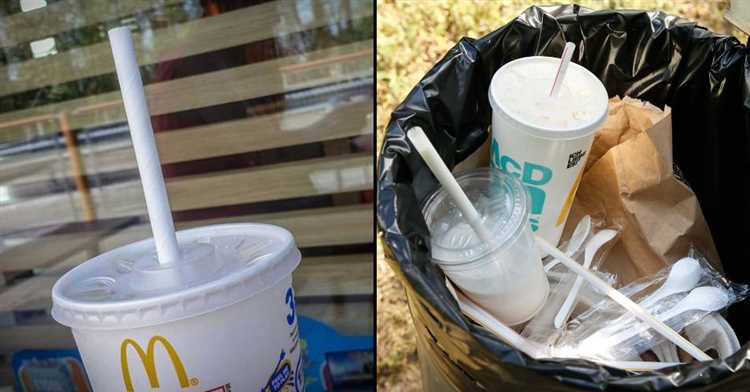
McDonald’s, one of the largest fast food chains in the world, is known for its iconic packaging. From the Big Mac box to the Happy Meal bag, the company uses a considerable amount of paper packaging every day. With the growing concern for the environment and the need for sustainable practices, it is important to ask whether McDonald’s paper packaging can be recycled.
The answer to this question is yes, McDonald’s paper packaging can be recycled. While it may depend on local recycling facilities and regulations, the majority of their paper packaging is recyclable. This includes the paper cups, burger wrappers, and the cardboard boxes used for packaging their food products.
McDonald’s has taken steps to make their packaging more environmentally friendly. They have set a goal to source 100% of their guest packaging from renewable, recycled, or certified sources by 2025. In addition, they are working towards making all of their packaging recyclable and are exploring ways to reduce packaging waste.
It is important to note that recycling McDonald’s paper packaging is not just the responsibility of the company. Consumers play a crucial role in the recycling process by properly disposing of their waste and separating recyclable materials. By doing so, we can contribute to the efforts of reducing waste and preserving the environment.
- Recyclability of McDonald’s paper packaging
- Environmental impact of McDonald’s packaging
- Challenges in recycling McDonald’s paper packaging
- Sustainable alternatives to McDonald’s paper packaging
- McDonald’s efforts towards recycling its paper packaging
- Consumer role in recycling McDonald’s paper packaging
- Q&A:
- Can paper packaging from McDonald’s be recycled?
- What type of paper packaging does McDonald’s use?
- Are McDonald’s paper cups recyclable?
- Can McDonald’s paper packaging be composted?
- What should I do if my local recycling facility doesn’t accept McDonald’s paper packaging?
- Can I recycle McDonald’s paper packaging?
Recyclability of McDonald’s paper packaging
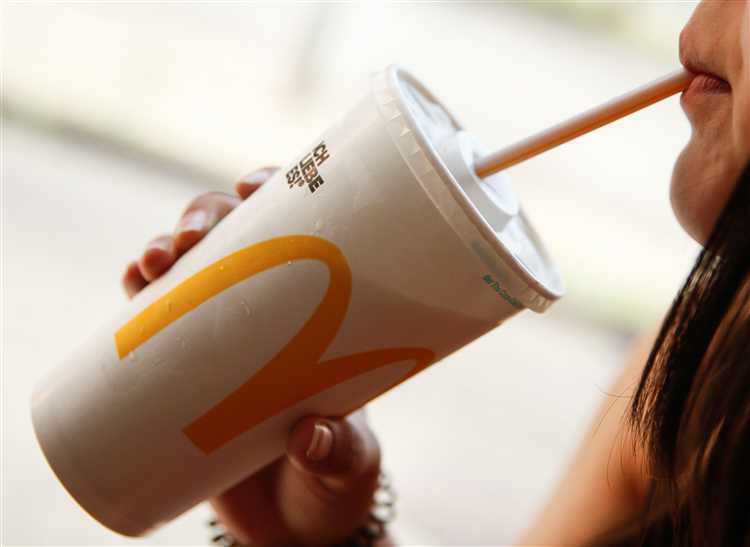
McDonald’s has made significant efforts to ensure that its paper packaging is recyclable and contributes to a more sustainable environment. The company understands the importance of reducing waste and has implemented various measures to make recycling easier for its customers.
McDonald’s paper packaging, such as cups, burger wrappers, and carryout bags, are typically made from a combination of paperboard and fiber materials. These packaging materials are chosen for their durability and ability to preserve the quality of the food while being environmentally friendly.
When it comes to recycling, McDonald’s encourages its customers to dispose of their paper packaging in designated recycling bins. The company aims to increase access to recycling infrastructure in all its restaurants to ensure that as much packaging as possible is recycled rather than ending up in landfills.
In addition to promoting recycling, McDonald’s has also joined forces with various organizations and recycling initiatives to improve the recyclability of its packaging. Through partnerships, the company aims to develop new technologies and methods that will make the recycling process even more efficient and effective.
It is important to note that while McDonald’s paper packaging is recyclable, it is essential for consumers to follow proper recycling guidelines. This includes separating the packaging from any leftover food or liquids and placing it in the correct recycling bin. By doing so, customers can play their part in ensuring that McDonald’s paper packaging is successfully recycled and contributes to a more sustainable future.
In conclusion, McDonald’s paper packaging is recyclable and the company is committed to improving its recyclability and supporting recycling initiatives. By working towards a more comprehensive recycling system and encouraging customers to recycle properly, McDonald’s aims to minimize waste and contribute to a healthier planet.
Environmental impact of McDonald’s packaging
McDonald’s packaging has a significant environmental impact due to its sheer volume and the materials used in its production. The company serves billions of customers worldwide, and the packaging waste generated from its operations contributes to issues such as deforestation, marine pollution, and climate change.
Firstly, McDonald’s packaging often relies heavily on paper-based materials, such as cardboard and paperboard, which come from trees. The production of these materials contributes to deforestation, as trees are cut down to meet the demand for packaging. Deforestation not only destroys valuable habitats but also reduces the planet’s ability to absorb and store carbon dioxide, a major greenhouse gas contributing to climate change.
Additionally, the disposal of McDonald’s packaging poses a significant problem. While some of the packaging can be recycled, a large portion ends up in landfills or as litter, causing pollution. This pollution can harm wildlife and ecosystems, especially in marine environments where plastic packaging can be mistaken for food and ingested by marine animals.
Moreover, the production and disposal of McDonald’s packaging require significant amounts of energy and water. The manufacturing process for paper-based materials contributes to air and water pollution, and recycling these materials requires energy-intensive processes as well.
McDonald’s has made some efforts to address the environmental impact of its packaging. For example, the company aims to source its paper-based packaging from certified sustainable sources and encourages customers to recycle. However, more can still be done to reduce the amount of packaging used, promote more sustainable materials, and improve recycling infrastructure.
In conclusion, McDonald’s packaging has a substantial environmental impact, contributing to deforestation, pollution, and resource consumption. It is crucial for the company to continue working towards more sustainable packaging practices to minimize its negative effects on the environment.
Challenges in recycling McDonald’s paper packaging
While McDonald’s paper packaging is generally considered recyclable, there are certain challenges that arise in the recycling process. These challenges stem from the specific characteristics of the packaging materials used by McDonald’s.
1. Food contamination: One major challenge in recycling McDonald’s paper packaging is the potential for food contamination. Due to the nature of the fast-food industry, paper packaging often comes into contact with food residues and grease, which can contaminate the recycling process. Food-contaminated paper cannot be recycled and must be discarded instead.
2. Mixed materials: McDonald’s paper packaging often consists of mixed materials, such as paper and plastic. While these materials can be separated during the recycling process, it requires additional steps and resources, making the process more complex and costly.
3. Coated paper: Many of McDonald’s paper packaging products, such as cups and wrappers, are coated with a layer of plastic or wax to enhance their functionality and durability. This coating can pose challenges in the recycling process as it needs to be removed or separated before the paper can be recycled.
4. Lack of recycling infrastructure: Another challenge is the lack of recycling infrastructure capable of handling the volume of McDonald’s packaging waste. In some areas, recycling facilities may not have the necessary equipment or capacity to effectively process and recycle the packaging materials used by McDonald’s.
5. Consumer behavior: Proper recycling of McDonald’s paper packaging also relies on consumer behavior. Consumers need to ensure that they dispose of these items in the appropriate recycling bins or containers to maximize the chances of successful recycling.
Overcoming these challenges requires collaborative efforts from McDonald’s, recycling facilities, and consumers. Implementing measures to reduce food contamination, finding innovative ways to separate mixed materials, and investing in recycling infrastructure are all crucial steps towards effectively recycling McDonald’s paper packaging.
Sustainable alternatives to McDonald’s paper packaging
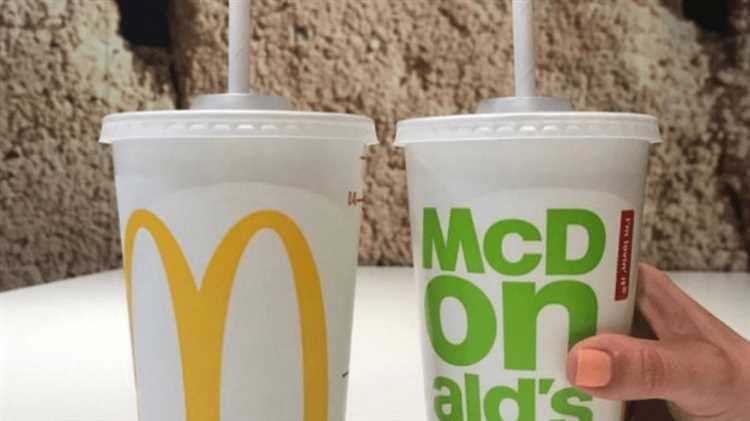
Mcdonald’s has been facing criticism for its paper packaging, which often ends up in landfills and contributes to environmental pollution. In recent years, there has been an increasing demand for sustainable alternatives to McDonald’s paper packaging. Here are some options that can help reduce the environmental impact:
1. Plant-based packaging:
One sustainable alternative to McDonald’s paper packaging is plant-based packaging. Made from materials like cassava starch, seaweed, or sugar cane fiber, these packaging solutions are biodegradable and compostable. They offer a more eco-friendly option compared to traditional paper packaging.
2. Bioplastics:
Bioplastics are another sustainable alternative to paper packaging. These plastics are derived from renewable sources like corn, sugarcane, or algae. They can be used to make containers, straws, and utensils, providing a viable alternative to paper packaging.
3. Reusable containers:
Implementing a system of reusable containers can significantly reduce waste generated by McDonald’s packaging. Customers could be encouraged to return the containers to the restaurants, where they would be cleaned and reused. This approach can help minimize the need for single-use paper packaging altogether.
4. Edible packaging:
Edible packaging is an innovative solution for reducing packaging waste. Using materials like seaweed or flavored films made from fruits and vegetables, this packaging can be consumed along with the food. It not only eliminates the need for paper packaging but also adds a unique, edible experience for customers.
5. Recyclable packaging:
While traditional paper packaging might not be easily recyclable, there are advancements in recycling technology that can make it possible. McDonald’s could invest in developing and promoting more efficient recycling programs, enabling the recycling of paper packaging and reducing its environmental impact.
Conclusion
As McDonald’s faces increasing scrutiny over its paper packaging, exploring sustainable alternatives becomes crucial. Plant-based packaging, bioplastics, reusable containers, edible packaging, and improved recyclability are some of the options that could help minimize the environmental impact of McDonald’s packaging and contribute to a more sustainable future.
McDonald’s efforts towards recycling its paper packaging
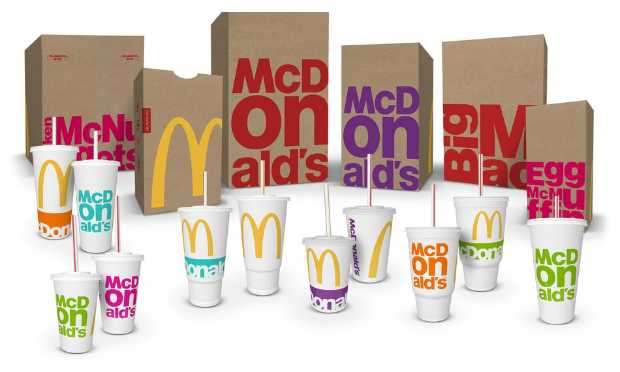
McDonald’s recognizes the importance of sustainability and has taken several steps to promote the recycling of its paper packaging.
Source reduction: McDonald’s has made efforts to reduce the amount of paper packaging used in its restaurants. By implementing more efficient packaging designs, they aim to minimize waste and environmental impact.
Paper sourcing: McDonald’s works closely with suppliers to ensure that the paper used in its packaging comes from responsibly managed forests. This is done to support sustainable forestry practices and protect natural resources.
Educating customers: McDonald’s actively educates its customers about the importance of recycling. Through various marketing campaigns, they encourage customers to dispose of their paper packaging in recycling bins and educate them about the benefits of recycling.
Recycling infrastructure: McDonald’s has partnered with local recycling organizations to establish recycling infrastructure near its restaurants. This includes installing recycling bins and collaborating with waste management companies to ensure the proper collection, sorting, and processing of paper packaging.
Innovation: McDonald’s also invests in research and development to explore new and improved ways to recycle its paper packaging. They actively seek out innovative technologies and materials that can enhance the recyclability of their packaging.
In conclusion, McDonald’s has taken various initiatives to promote the recycling of its paper packaging. Through source reduction, responsible paper sourcing, customer education, investment in recycling infrastructure, and innovation, McDonald’s is committed to minimizing its environmental footprint and making a positive impact on the planet.
Consumer role in recycling McDonald’s paper packaging
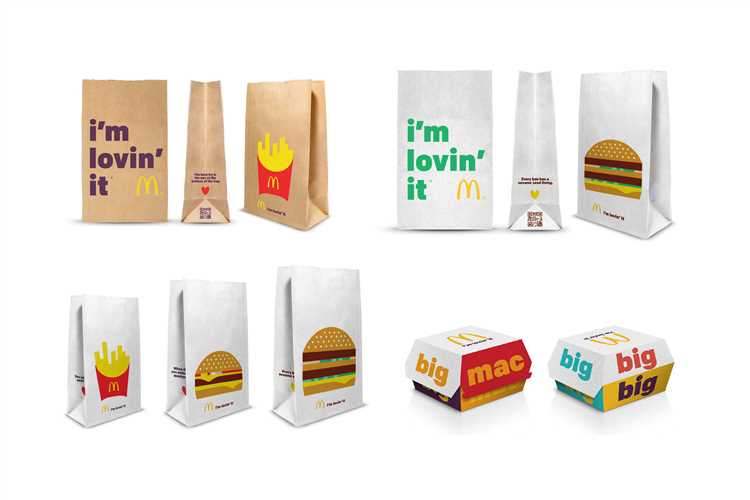
As a consumer, you play a crucial role in the recycling of McDonald’s paper packaging. Properly disposing of your used packaging helps ensure that it can be recycled and turned into new products. Here are some steps you can take to contribute to the recycling process:
- Separate your used McDonald’s paper packaging from other waste.
- Remove any leftover food or liquids from the packaging before recycling.
- Check with your local recycling program to see if they accept McDonald’s paper packaging.
- If your recycling program does not accept McDonald’s paper packaging, consider reaching out to them and advocating for its inclusion.
- If possible, rinse out any greasy or oily containers to improve their recyclability.
- Flatten cardboard boxes to save space and make transportation more efficient.
- Place the paper packaging in your recycling bin or take it to a nearby recycling center.
By following these simple steps, you can help ensure that McDonald’s paper packaging is given a second life through recycling. Remember, every small action counts towards a more sustainable future!
Q&A:
Can paper packaging from McDonald’s be recycled?
Yes, paper packaging from McDonald’s can generally be recycled. However, it depends on the recycling facilities available in a specific area.
What type of paper packaging does McDonald’s use?
McDonald’s uses a variety of paper packaging, such as cups, burger boxes, and paper bags.
Are McDonald’s paper cups recyclable?
Yes, McDonald’s paper cups are typically recyclable. However, it’s important to check the specific recycling guidelines in your area as some recycling facilities may not accept cups with food residue.
Can McDonald’s paper packaging be composted?
Yes, McDonald’s paper packaging can usually be composted. If the packaging is free from any food residue, it can be added to a composting pile or facility.
What should I do if my local recycling facility doesn’t accept McDonald’s paper packaging?
If your local recycling facility doesn’t accept McDonald’s paper packaging, you can try reaching out to McDonald’s directly to see if they have any specific recycling programs in your area. Alternatively, you can consider reducing your use of single-use packaging or finding alternative ways to recycle or reuse the packaging.
Can I recycle McDonald’s paper packaging?
Yes, McDonald’s paper packaging can usually be recycled. However, it is important to check with your local recycling program to see if they accept McDonald’s packaging, as recycling guidelines can vary by location.